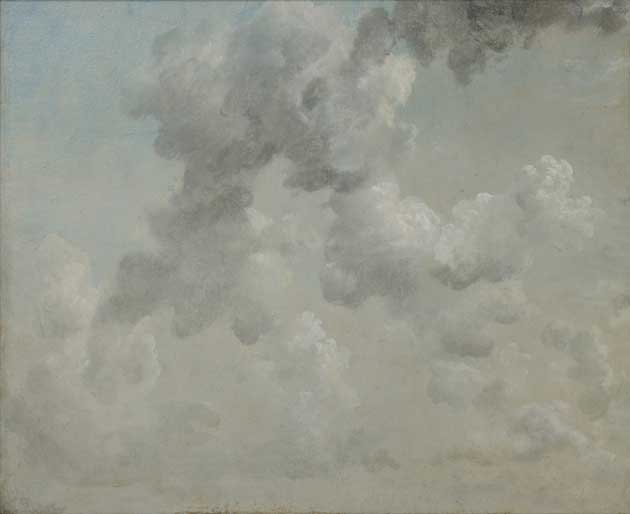Great Works: Study Of Clouds (1822) by John Constable

Your support helps us to tell the story
From reproductive rights to climate change to Big Tech, The Independent is on the ground when the story is developing. Whether it's investigating the financials of Elon Musk's pro-Trump PAC or producing our latest documentary, 'The A Word', which shines a light on the American women fighting for reproductive rights, we know how important it is to parse out the facts from the messaging.
At such a critical moment in US history, we need reporters on the ground. Your donation allows us to keep sending journalists to speak to both sides of the story.
The Independent is trusted by Americans across the entire political spectrum. And unlike many other quality news outlets, we choose not to lock Americans out of our reporting and analysis with paywalls. We believe quality journalism should be available to everyone, paid for by those who can afford it.
Your support makes all the difference.Clouds are all sorts. They are a medium of revelation, through which the gods show themselves. They're a playground for human imagination, where we can see any number of forms and creatures ("Very like a whale!"). They are mood music, the emotional backdrop to a scene. They are complex natural phenomena, which challenge our capacity for accurate observation.
Artists are free to take clouds and mould them as they will, into celestial signs, or animals, or expressive abstractions. But the discovery in the late 18th century that clouds are not infinitely mutable fluff, that they come in types – cumulus, stratus, cirrus, nimbus – checked that freedom. If clouds are pure formlessness, we can do what we like with them. If they have fixed identities, they may resist our shaping.
This Study of Clouds by Constable claims a strictly observational status. His vantage point is Hampstead Heath. The canvas is marked on the back: "31 Sepr 10-11 o'clock morning looking Eastward a gentle wind to East." Still, the painting itself may leave you wondering what kind of formation you're looking at. Seen one way, this cloud mass declares a distinct shapeliness. It has a linear structure. Within its clumpiness, you can discern an arrangement of straight lines, diagonals and parallels and intersections and enclosures. It's formed like a graphic symbol or a Chinese pictogram. It could be drawn out in bold, simple marks.
It's a shape that looks designed, a kind of sky-writing. And given that these are clouds, with their supernatural associations, this pattern may suggest, subliminally, a sign or a message forming in the heavens. But then, the whole effect remains very subliminal. A shape can be detected, but it's sufficiently diffuse, on the verge of unforming, to keep you uncertain about whether it's really there at all. Dabs of cloud build up, but where do they conclusively group? At every point, what might be a co-ordinated design might equally be an unplanned gathering. A deliberate scheme is possible, a pattern is never definite and decided enough to be certain.
The structure is so elusive that it might have arrived with no deliberate shaping. Perhaps it appears in the painting simply because it appeared in the sky, and Constable transcribed it with unblinking accuracy from an ambiguous natural cloud formation. Or perhaps it materialised through an act of drifting painting, the brush improvising.
You can't be sure that the artist was doing any manipulation, or was even aware of the quasi-pattern emerging. So Constable's own work ends up like nature itself – a phenomenon in which you can see shapes, but where no conscious shape-making has taken place.
Or, if it's impossible to believe Constable was really unaware of his sky-writing, you can see a more complicated kind of intention: achieving this shapely effect, he managed to bring it off as if he wasn't forcing it or noticing it, by keeping his handiwork always indeterminate and undirected.
Five years before Constable painted this picture, Keats was writing, in praise of a rare creative faculty. He called it "Negative Capability, that is, when man is capable of being in uncertainties, Mysteries, doubts without any irritable reaching after fact & reason". It happens when artists know how to stay back, leaving their work open, unsolved, holding unknowns. If you want to know what negative capability looks like in paint, it looks like this.
About the artist
John Constable (1776-1837) painted 'The Hay Wain', and gave his name to a part of the world, and turned the natural world into a grand theatre of emotional expression. His turbid, flecky paint-world isn't a favourite with all of us. But there's another side to Constable, the artist who works small and self-forgetting – filling a canvas with a rush of raw paint, or a single up-front tree trunk, a long view of clouds.
Join our commenting forum
Join thought-provoking conversations, follow other Independent readers and see their replies
Comments